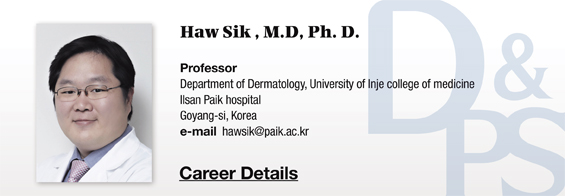▶ Previous Artlcle : #6-1. Considerations for clinical application
Particular caution should be given in treating pregnant and lactating women as well as patients currently on retinoid and other photosensitive drugs and patients with photosensitivity. These groups of patients can have hypersensitive reaction to treatment and the treatment should begin with lower intensity and gradual upward adjustment of the energy level. It is advisable to perform IPL in these patients after their limiting conditions have terminated.
[Advertisement] Selene(Diode hair removal Laser) – Manufacturer: (www.senbitec.com)]
Patients with long-term diabetes, hemophilia or other coagulopathy as well as patients with implants or pacemaker in the site of treatment require special caution. Doctors tend to underestimate the risk of herpes simplex with non-laser procedures. However, according to foreign literature, antiviral agents are recommended with IPL treatment of the entire face of patients prone to herpes simplex.
The patient should remove all make-up before treatment and areas of hair removal should be shaved. Markings using a white marker are advised before more focused procedures such as hairline correction, etc. The doctor should wear protective goggles but as IPL uses a wider spectrum of light, goggles may be insufficient to filter all wavelengths. Therefore, the doctor should temporarily close his/her eyes during irradiation.
The fluence of irradiated energy is determined based on Fitzpatrick Skin Types. High intensity can be used with few problems in patients with lighter skin tone, but those with darker skin are more susceptible to side effects. In these patients the fluence should be gradually increased from a low level in the start of the treatment. In general, Koreans tend to be type II~IV and the default parameters are set for this type in Korea. However, as more Korean patients visit overseas for aesthetic treatments and many have darker skin tones beyond type V, using default parameters may cause side effects. Table 1 summarizes other baseline factors that may affect the treatment outcome.
Once the treatment begins, cooling gel is applied before light irradiation. About 10-25% of target area overlaps with the immediately previous irradiation area. Treatment of small lesions require covering of non-target areas with thick plastic or fabric cover or partial covering of the handpiece tip with gauze. After treatment, an ice pack or cooling mask can be used to cool the treated area and direct exposure to sun light or UV should be avoided for about 8 weeks. A sunscreen as well as a visor should be used for outdoor activities. Follow-up treatments should be performed after at least a 4-week interval.

3. Side effects of IPL
The most common side effect of IPL is pain but this can be easily relieved by pre-procedure application of topical anesthetics or cooling during procedure. Mild edema and erythema may continue days after treatment. Overtreatment may result in blisters and encrustation. Patients should be cautioned not to scratch the face to tear the blisters or remove crusts. Patients should be explained of the risk of scarring due to forceful removal. Applying topical antibiotics containing petroleum and moisturization can prevent secondary infection.
Persistent side effects include hyperpigmentation or hypopigmented spots. Hypopigmented spots are more common in darker skinned patients receiving high intensity treatment and do not respond to treatment. Hypopigmented spots are rare among Korean patients but it can occur in skin darkened from excessive sun exposure and as such should not be treated by IPL. Scarring is very rare in IPL treatment but excessively high energy may result in scars.
How can we avoid side effects of IPL? The above mentioned side effects are caused by use of excessively high intensity. Therefore, doctors should not ambitiously try to tackle all lesion types only with IPL before they master the device. Moreover, test shots should be used about 5 minutes before the procedure to help select the energy level for the target lesion. Foreign guidelines recommend taking test irradiation 6 weeks before treatment to observe side effects. However, this is impractical in the current clinical practices in Korea. When redness or swelling occurs from test irradiation immediately before treatment, energy level should be lowered to reduce risk of side effects.
Patients with light complexion are susceptible to erythema or edema. Therefore, doctors must be careful to always perform test irradiation before the actual treatment. As the skin thickness varies across facial areas, the parameters should be changed accordingly. The same parameters appropriate for one area may cause blisters in another, therefore adjustment of parameters is very important. This article discussed considerations for clinical application of IPL. The following articles will deal with each indication of IPL including vascular disorders, erythema, pigment, and hair removal.
-To be continued-





















